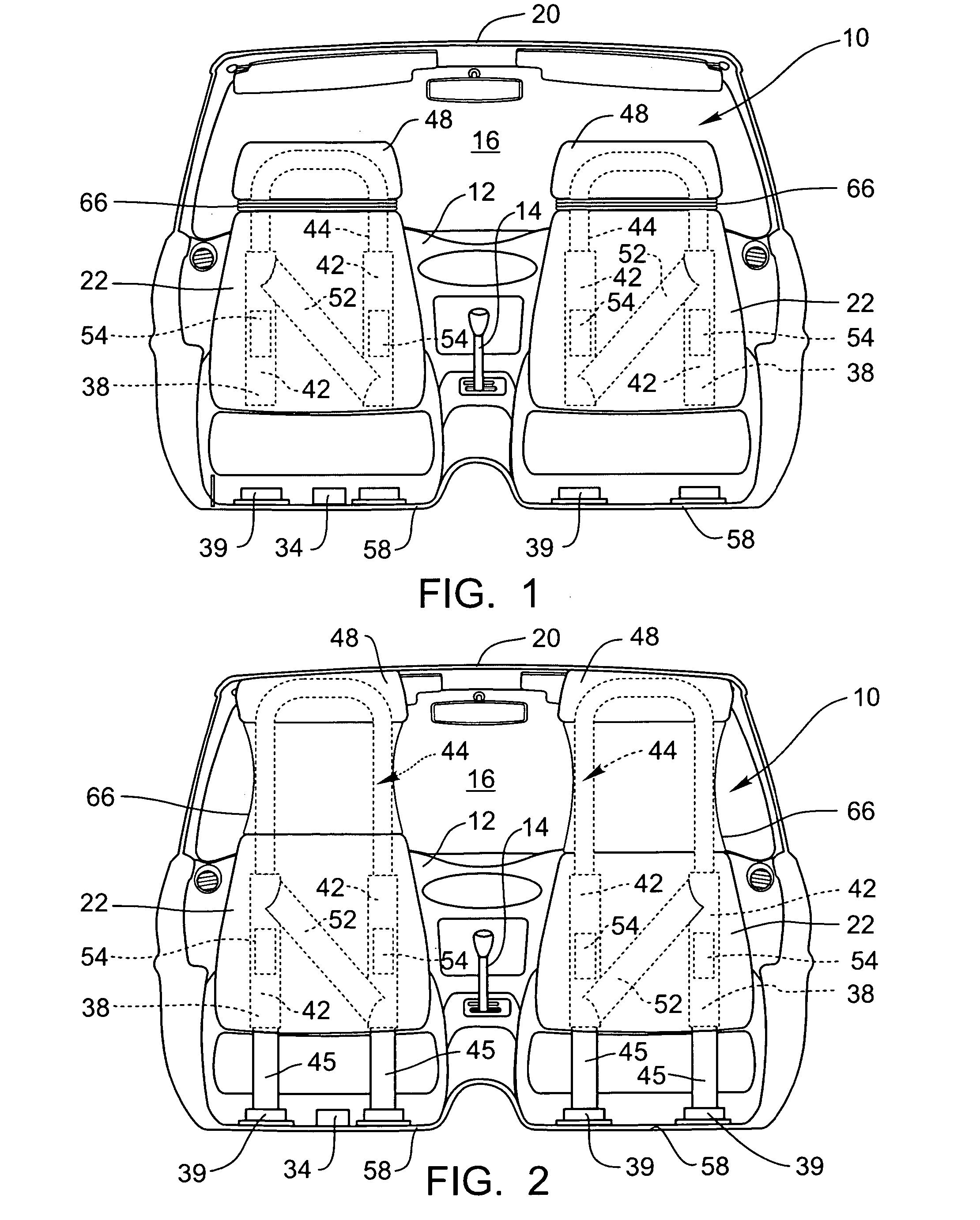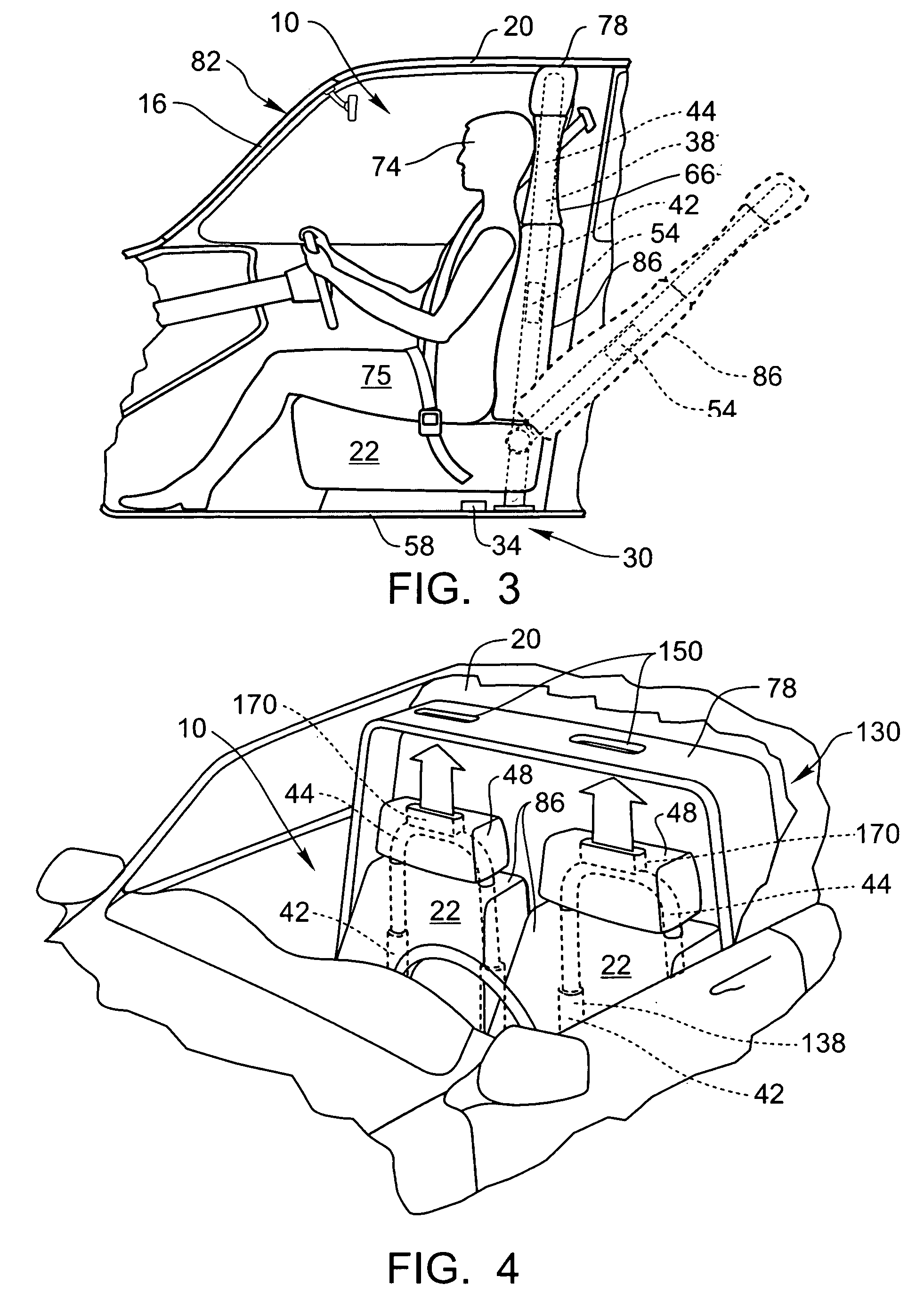Rollover protection for motor vehicles
a technology for motor vehicles and rollovers, applied in the direction of roofs, movable seats, pedestrian/occupant safety arrangements, etc., can solve the problems of occupant injury/death to vehicle occupants, occupants of a convertible vehicle involved in a rollover accident are often killed or seriously injured, and the impact is severe, so as to reduce the impact, and reduce the impact of the vehicl
- Summary
- Abstract
- Description
- Claims
- Application Information
AI Technical Summary
Benefits of technology
Problems solved by technology
Method used
Image
Examples
Embodiment Construction
[0029]The presently preferred embodiments of the present invention will be best understood by reference to the drawings, wherein like parts are designated by like numerals throughout. It will be readily understood that the components of the present invention, as generally described and illustrated in the figures herein, could be arranged and designed in a wide variety of different configurations. Thus, the following more detailed description of the present embodiments, as represented in the Figures, is not intended to limit the scope of the invention, as claimed, but is merely representative of presently preferred embodiments of the invention. Referring now to FIG. 1, a sectional view of a vehicle interior 10 is illustrated. The view illustrated in FIG. 1 is depicted as if the reader is seated in a rear passenger seat of the vehicle. Accordingly, the vehicle interior 10 includes a dashboard 12, a gear shift 14, a windshield 16, etc. Those of skill in the art will recognize that othe...
PUM
 Login to View More
Login to View More Abstract
Description
Claims
Application Information
 Login to View More
Login to View More - R&D
- Intellectual Property
- Life Sciences
- Materials
- Tech Scout
- Unparalleled Data Quality
- Higher Quality Content
- 60% Fewer Hallucinations
Browse by: Latest US Patents, China's latest patents, Technical Efficacy Thesaurus, Application Domain, Technology Topic, Popular Technical Reports.
© 2025 PatSnap. All rights reserved.Legal|Privacy policy|Modern Slavery Act Transparency Statement|Sitemap|About US| Contact US: help@patsnap.com



